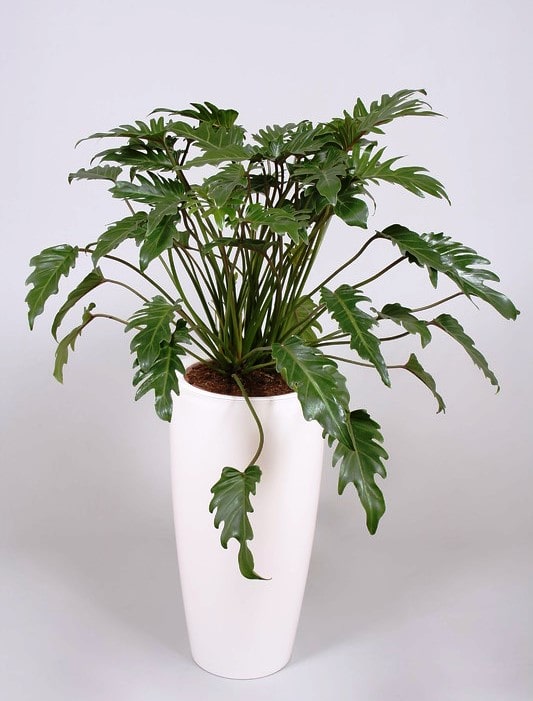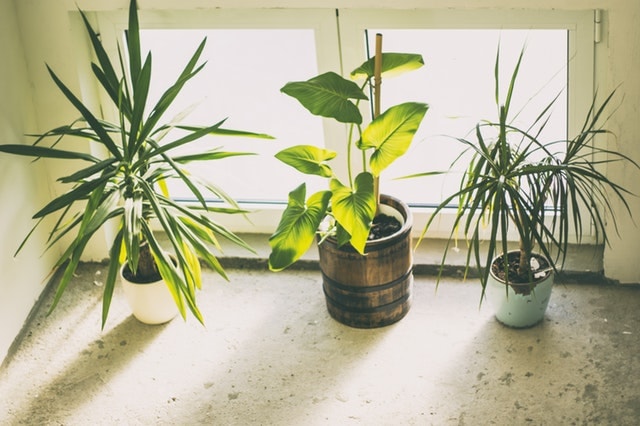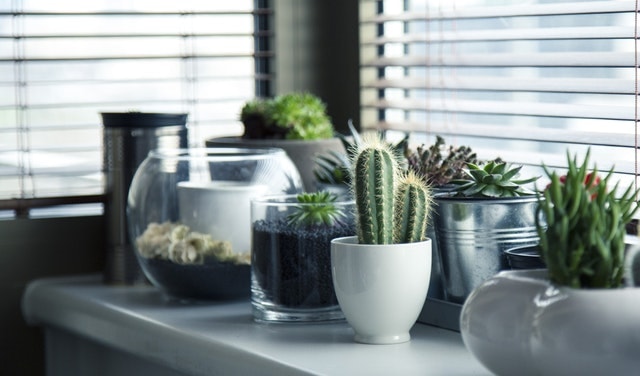Last Updated on 2 years by Namrata
Be it a seasoned gardener or a passionate plant lover, everyone needs to know how to grow any plant. It is unnecessary to have a large house or apartment with a garden and backyard if you want to grow plants. You will find several indoor plants that require less storage than you can imagine. The Philodendron Xanadu plant is one such plant. However, give proper attention to it, so you do not kill them while growing.
Philodendron Xanadu is handy if you have a smaller apartment. You can grow it indoors with ease, and the fascinating thing about these plants is that the older they get, the more attractive and better they look.
Philodendron Xanadu is a part of the Araceae plant family and a native of Brazil. Instead of growing vertically, it tends to spread upright and has deeply split leaves. If not kept indoors, these plants might reach around 5feet. The shape of these plants is a bit compact, shady, and dense. That is why you can use it in your abode to give the space a tropical vibe.
Also, you can propagate these plants in less space. So, there is no need to bother about the sunlight. Only give Philodendron Xanadu its required light, water it regularly, and provide it with well-drained soil. You will notice its healthy growth in the future.
Besides, you need to know several other aspects of these plants also. Irrespective of whether you are a contemporary gardener or new to this field, the below information will assist you. So, go through the following segments as they will discuss the Philodendron Xanadu propagation from stem and leaf, its caring, soil mix, pruning, and several frequently asked questions. All these will help you to grow Philodendron Xanadu propagation or Thaumatophyllum Xanadu propagation as both are the same.
Philodendron Xanadu Propagation

How to propagate Philodendron xanadu from the stem?
You can propagate Philodendron Xanadu from the stem. But it is challenging due to the pathogens. They might attack it as the stem has little moisture resistance. As a result, they rot swiftly if you do not give proper attention while propagating. But you might wonder how to do the job with ease. There are a few processes involved in the propagation of these plants from the stem. If you follow the below guide, you can grow several Philodendron Xanadu plants in your home.
- First, choose a young and healthy stem.
- Then, cut a 3-6 inch portion from the tip of it to above a leaf.
- Next, keep 2-3 leaves at the top and remove others.
- After that, place the newly cut stem in water.
- Then, change the water frequently with clean water and support stave off pathogens.
- Finally, you will see the plants are sprouting.
You can place the stem in direct soil also. But remember that while placing, avoid pushing it into the earth as it might cause harm to the stem. Make a hole, place the stem, and spread the soil around it. After placing it, water it and retain the moisture in the medium. You will notice the stem will sprout in the end.
How to propagate Philodendron xanadu from leaf?
Apart from propagating from the stem, you can also propagate Philodendron Xanadu from the leaf. Here is the entire process.
- Firstly, take a mature and adult leaf with a stalk.
- Then, apply some rooting hormone to the bottom of the leaf and tuck it in compost or moist sand. You can place the leaf in a water-filler jar also.
- Finally, you will discover roots are coming out from the leaf.
Philodendron Xanadu Care
You can grow Philodendron Xanadu indoors and outdoor. But, you need to understand the below aspects to propagate these plants and offer them healthy growth. So, let us talk about Philodendron Xanadu caring.
- Sufficient amount of light
The Philodendron Xanadu requires a proper and sufficient amount of light to sustain its compact look. If there is a deficiency of lighting, the stem might not survive. Whereas, too much bright light will cause the leaves to become unhealthy and eventually burn them. That is why it develops best in the indirect light-medium. It is advisable to give your plant a sheltered position if you grow it outdoors. Besides, select a place for indoor conditions, where it gets an adequate amount of sunlight every day.
- Watering gently
The leaves of Philodendron Xanadu turn yellow if the soil becomes too wet. So, before watering it, check whether 50-70% of the earth is dry or not. If not, then allow the plant to drain out the water completely. Remove excess water from the pot as it might rot the roots. After that, water it until the liquid flows through the hole. But remember never overwater Philodendron Xanadu. You can dip your fingers in the earth and examine the moisture. In this way, you can protect your plant from killing.
- Humidity
Humidity is a crucial factor in Philodendron Xanadu’s care. Though it can withstand the level of humidity detected in most homes, you need to do several things daily to retain the humidity. You can utilize water misting sprays or pebble trays to do it. All you will need is to take a water-filler tray and lay the stones on it. You will see the water evaporate from the pebbles, and as a result, it will generate sufficient humidity for the plants. But still, if there are any humidity-related issues, you can use a room humidifier to create an artificial rainforest and provide the plants with sufficient humidity. If you can keep the exact amount of humidity, it can protect your plants from spiders. But avoid keeping them in a dry place for their healthy growth.
- Temperature
The Philodendron Xanadu prefers daytime temperatures between 65-75 degrees Fahrenheit. But at night, it needs warmth around 60 degrees Fahrenheit. This temperature flexibility is one of the reasons why people love to propagate these plants. But while growing, remember that these plants cannot bear temperatures below 50 degrees.
- Food or fertilizer
You need to concentrate on food habits if you wish to grow Philodendron Xanadu. It dislikes feeding in the winter. But in summer, it likes to eat every other week. But in the spring, you must fertilize them monthly for their healthy growth. Always use balanced food and ensure that the earth is damp before providing fertilizer. As Philodendron Xanadu is a slow-growth loving plant, ensure that you provide sufficient calcium, magnesium, and other nutrients to propagate them adequately.
- Potting and repotting
Philodendron Xanadu admires growth in a deep pot. So, use a container having drip holes in the bottom to create a root ball. Besides, repot these plants when they begin to spread their roots in the pot.
- Additional caring tips
You will find that several leaves might turn yellow naturally. You should remove these dying leaves by snapping them off. Besides, these plants are compact and dense. So, frequently examine the plant and eliminate the dried leaves from the bush. All these will help you protect the plant from mold and fungal attacks.
MORE POSTS: 5 Tropical Big Leaf Houseplants for Indoor Gardens
When and how to divide Philodendron Xanadu?
If you want to propagate Philodendron Xanadu, the best way to do this is through division. But why so? Well, this plant is a fast-growing variety and tends to become too large quickly. That is why you need to divide it at the time of repotting in the spring season. But keep in mind that you should water the plant the day before the division. It will offer the roots some resilience. But there are some methods involved in this which are as follows.
- Gently remove the plant from the pot and verify whether it has any natural division point or not.
- Do not remove a single stem. Instead, try to retain them in groups to get better results.
- Carefully ease the roots as they might get entangled with each other. You can cut them with a blade dipped in a sterile.
- Divide the plant’s root into two different sections.
- Repot them in a separate container with a well-drained soil mix. If there is any dead root, remove it immediately.
- Cover the white stem part with the soil but do not place them deeply.
- Water the divided plants and complete the division process.
Best Potting Soil Mix for Philodendron Xanadu
Like most plants, Philodendron Xanadu also admires well-drained and organically rich soil. A fast-draining soil mix does two essential things. Firstly, it keeps the plant’s roots from standing firmly in wet earth, and secondly, it offers the needed oxygen to the plant. A well-drained soil makes the watering task much easier as it can remove the excess water with ease.
This plant prefers PH levels between 5.6-7.5. So, make the soil mix so that it can gradually become acidic. For this, you must include several ingredients like cocopeat, coconut fibers, charcoal, orchid bark, pumice, coarse sand, and perlite to assist in aerating the soil mixture. Besides, you can propagate these plants in sphagnum peat moss also with no hassle.
According to experienced gardeners, the ideal soil mix for a Philodendron Xanadu is a combination of perlite, cocopeat, and compost in a 1/3 ratio of each. Besides, you can also include some bark or wood chips in that mixture. The amalgamation of these components will assist you in producing faster-drained soil and thus helps the plant grow better.
When and how to prune Philodendron xanadu?
Prune your Philodendron Xanadu frequently to maintain its shape. Pruning is necessary for these plants as they tend to grow leggy. Besides, you will locate several yellow and dying leaves as a natural growth process. So, prune them off to protect the plant from pests and fungus. Just cut off the stem base carefully to trim the plant. But before doing so, you should take every precaution to prevent your Xanadu from being damaged. If you are using a knife or a scissor, sterilize it with an alcohol-based solution before utilizing it. Apart from this, you might prune the plant to make it more dense and compact.
FAQs on Philodendron xanadu
Let us now take a quick look into some of the most commonly asked questions below regarding Philodendron Xanadu.
When is the best time to water Philodendron xanadu?
Philodendron Xanadu thrives in high-humidity conditions. They also withstand a typical home environment. You only need to keep the soil moist to provide it with sufficient humidity. But watering is the most vital part when you are growing this plant. So, water it until the soil drains excess water from the bottom hole of the pot. Remember that after watering, do not give any liquid fertilizer or water again until the 2 inches of soil surface dry out. Excess watering turns the leaves yellow, and several pests and fungi might attack the plant.
Is Philodendron xanadu toxic to pets?
Yes, Philodendron Xanadu is toxic, especially for cats and dogs. These plants comprise a compound called calcium oxalate. If pets chew the leaves, the composite starts to react. They might encounter skin irritation, pain, drooling, and swelling of the lips, tongue, and mouth. So, as a pet owner and a Philodendron Xanadu lover, you should keep your pets away from it.
Why is my Philodendron xanadu turning yellow?
People can face yellow leaves problems whenever they grow this plant. They can turn yellow for multiple reasons. The most common one is sun rays. This plant dislikes excessive sunlight. So, if you place it in a partially shady area, there will be lower risks of the yellow leaves problem. Besides, this issue happens due to overwatering. Before watering your Xanadu, ensure that the soil is dry and devoid of moisture. On top of it, you must make a faster and well-drained soil mix to eliminate the yellow leaves hindrance.
Can Philodendron xanadu grow in water?
The answer is yes. You can grow Philodendron Xanadu only in water. Fill a jar or container with purified or tap water. Let the water rest for 24 hours as it will dissipate chlorine. After that, cut a stem of the Xanadu plant and sink it into the jar. You will see roots forming within a few weeks.
Can Philodendron xanadu grow outside?
Yes, you can propagate Philodendron Xanadu in the garden or your backyard. But before that, you need to consider several factors to offer it healthy growth. As you know, this plant is a forest-dwelling variety. So, it hates excessive sunlight and loves shade. Besides, you need to create well-drained soil having multiple nutrients. Feed it every 3-4 months if you grow it outside. In addition, this plant is prone to pests and fungal attacks while growing outdoors. It is also toxic for your pets. So, give proper attention and ensure no fungus and insects harm your Xanadu. Also, keep it away from your cats and dogs. If you consider all these things, you can grow this plant outside with ease.
Do Philodendron xanadu have invasive roots?
Yes, Philodendron Xanadu includes invasive roots. These plants cannot support themselves, but their invasive roots do the job for them. It consists of a soft trunk with aerial and long-distance roots to provide complete sustainability to them.
Philodendron xanadu Vs Thaumatophyllum xanadu
Philodendron Xanadu and Thaumatophyllum xanadu are indeed the same plant species. The name change from Philodendron to Thaumatophyllum was based on recent botanical research and reclassification. This switch in nomenclature was supported by molecular studies that revealed genetic differences between Philodendron and Thaumatophyllum. Despite the name change, the plant’s physical characteristics remain the same. With its lush, glossy green leaves and compact growth habit, Philodendron Xanadu (or Thaumatophyllum xanadu) is a popular choice for indoor and outdoor gardens alike. It exhibits a tropical and exotic appearance, adding a touch of natural beauty to any space.
Summing Up
So, you can see that Philodendron Xanadu is a humidity-loving plant. You can easily keep it in your home or apartment and make the area aesthetically beautiful. But while keeping it inside, ensure that the plant gets enough sunlight to grow better. So, do not waste time and make your place appealing with this forest plant. You can also gift it to someone by propagating it yourself with the stem.
Read More Posts:



